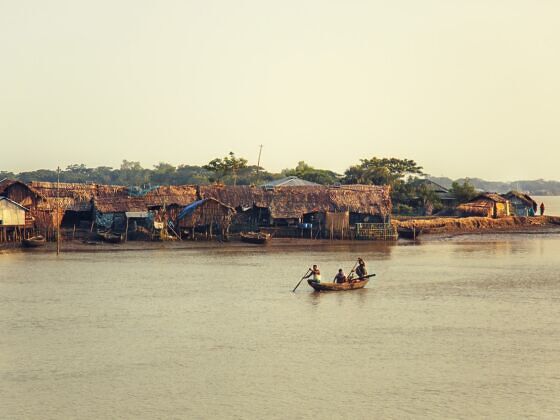“I HAVE NO INCOME,” he says.
He displays no emotion. He could have been telling me the time of day.
Ananth Bhyaa is our guide in the Sundarbans. The mangrove trees and the rivers that empty into the sea on the border between India and Bangladesh make this place the largest delta and estuarine forest in the world, and the largest tiger reserve in India — it’s famous as a home of the man-eating Bengal tiger.
